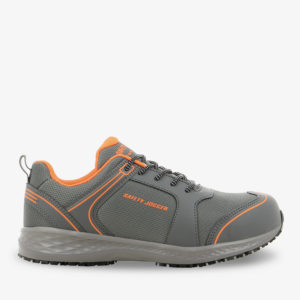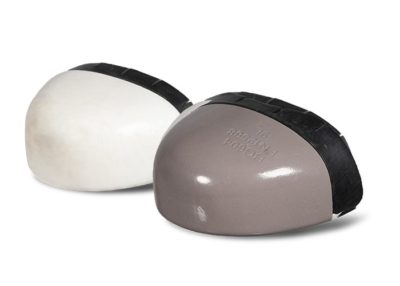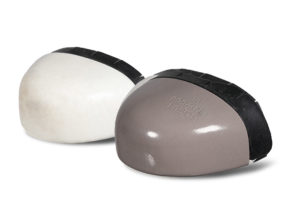Steel Vs Composite Toe Safety Shoes
Safety shoes with a sole and toe caps are made to guard against a number of threats and accidents. After assessing the possible risks in the workplace (risk assessment), the footwear and its safety classification should be chosen. When all other appropriate or realistic steps to mitigate occupational risks have been taken, safety toe work boots can only be seen as a last resort. They are the last line of defense against hazards. The most popular forms of foot injuries are impact, compression, and puncture.
The type of materials handled by the worker, the possibility of items dropping on or rolling over the feet, knives that could cut the tops of the feet, and so on are all common hazards. We’ll go through the distinctions between steel toe and composite toe work boots a bit more in-depth below.

Steel Vs. Composite Toe Caps: What’s the Difference?
If you’re shopping for safety toe work boots, it’s crucial to consider not just the codes and regulations that apply to them, but also the materials that they’re made of. Steel toe caps are standard on some safety toe work boots, while composite toe caps are standard on others. Both materials serve the same reason, which is strange. Regardless of the material, a protective toe cap made to European or ASTM standards can shield the feet from impact. However, what is the difference between steel toe and composite toe work boots, and which is the better option for you?
You will make a confident and right purchase for your work activities if you recognize the differences between steel toe work boots and composite toe work boots. This list will help you cut the knot by outlining all of the distinctions between steel toe and composite toe work boots.
Steel Toe vs. Composite Toe: Which Provides Better Protection?
Let’s start with the most important issue: “safety”.
ASTM International developed guidelines for safety footwear manufacturers to test and rank their shoes and boots. The related ASTM F2412 (Standard Test Methods for Foot Protection) and ASTM F2413 (Standard Specification for Performance Requirements for Protective (Safety) Toe Cap Footwear) specifications apply to footwear with a protective toe cap. The toe cap must be checked for impact and compression, according to ASTM F2413. The ASTM F2412 test methods are used to assess impact and compression resistance.
When something heavy falls on the shoe, impact testing is used to see what happens. Compression testing examines what happens when a heavy object is rolled onto the shoe
The bottom line is this: all safety-toe footwear must pass the same impact and compression tests.
Safety footwear that meets ASTM standards is labeled with a code that indicates which hazards it has been tested against. There are also tests for protection against electrical shock, punctures, and other hazards in addition to impact and compression testing.
Steel toe cap
Made only of steel the steel toe caps are still very popular in use since the 1930s. Of course, a thinner layer is used in the work boots, which is stronger than the composites toe caps. Cost lesser than composites toe work boot. It conducts Cold, heat, and electricity.
Steel – Benefits
Steel offers excellent resistance to both crushing damage and penetration by sharp objects. It is worth noting that steel can usually exceed this requirement by a greater margin than composite alternatives, and thus can be said to offer more protection to the wearer in extreme cases (though for general industrial use both should be fine).
Steel – Drawbacks
Steel, on the other hand, has some drawbacks. Firstly, adding steel components to footwear quickly makes it heavier, and this extra weight can be tiring, especially if you have to move around a lot at work. To make matters worse, metal toe caps tend to trap heat, and steel toe capped safety boots can become unbearably hot during the summer months. Metal, on the other hand, can become extremely cold when exposed to low temperatures, which means that steel safety boots are not always the best choice of footwear for working in cold storage facilities and similar environments. Furthermore, if you work in a high-security environment, such as an airport or prison, you will almost certainly be required to walk through a metal detector on a regular basis, and steel safety boots will always set it off.
Metal can also be dangerous in certain situations due to its high electrical conductivity and proclivity to cause sparks when struck by another metal object, though because it is normally insulated by other materials inside the footwear, this is not as much of a problem as might be assumed. Steel toe caps do not pose an increased risk of electrocution on their own because they are insulated by the rest of the shoe and do not typically come into contact with the ground.
Similarly, if safety boots have been worn to the point where metal components are exposed, there is a chance that they will cause sparks, rendering them dangerous for use in combustible environments. In any case, if the soles or toes of safety boots become worn out, it is recommended that they be replaced as soon as possible.
Composite toe cap
Made from non-metal materials such as fiberglass, carbon fiber, Kevlar, or plastics. Originally designed to address some of the flaws of the traditional steel safety boot.
Composites – Advantages
firstly, more comfortable to wear: they are light – meaning they don’t drag your feet down as heavier boots can, and they don’t get excessively hot or cold. In addition, non-metallic anti-penetration midsoles are softer and more flexible than steel. This means that at the end of a hot summer’s day on-site, composite work boots can definitely feel like an advantage.
Furthermore, because they are not made of metal, they can be worn in high-security workplaces without setting off metal detectors – though it should be noted that composite safety boots can still set off metal detectors if they contain other metal components (like eyelets).
Similarly, even if the boot becomes worn or damaged, composite toe caps and midsoles pose no increased risk of electrical shock or sparking. Composite midsoles can also be easily fitted along the entire length of the sole, which is not always possible with steel alternatives due to the need for this part of the shoe to be flexible. As a result, they can provide better protection against nails, screws, and other sharp objects.
Disadvantages of Composites
As previously stated, while composite safety boots are manufactured in accordance with European guidelines for acceptable impact and penetration resistance, they typically cannot exceed this rating to the same extent that steel can (at least not with most of the current technology on the market). As a result, if you work in extremely hazardous environments, they may not provide as much protection: if something extremely heavy is dropped on a composite toe cap, it may crack or shatter. The other major disadvantage of composite materials is that they are more expensive to implement and, as a result, are typically not as affordable as traditional steel toe-capped designs.
In conclusion, the best safety boot for your needs is determined by personal preference as well as environmental factors unique to your work environment. Remember that toe caps and midsoles aren’t the only things to consider when selecting safety footwear, especially if you’re working with electricity; for example, depending on the hazards of the environment you’re working in, you may need to wear either conductive, non-conductive, or anti-static footwear to reduce the risk of electrical shock or explosion. However, we hope that this guide has been helpful to anyone who requires a pair of work boots for general protection, whether at work or for other reasons. If you’re looking for new work boots, shoes, or trainers, visit our website @jashsupplies.com













 WhatsApp us
WhatsApp us